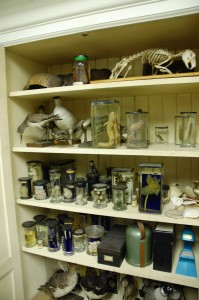This week, I was lucky enough to have a good rummage through the Scottish Council for Research in Education collection, which is in Glasgow University Archive Services. The council, which began in 1928, spent much of its life situated in Edinburgh, until its latter years when its staff were moved to the faculty of education in Glasgow.
It was the Scottish Council for Research in Education (who shall henceforth be known as SCRE!) who carried out the Scottish Mental Surveys, with funding from the Population Investigation Committee, the Eugenics Society, and, with later follow on studies, the Nuffield Trust. The surveys tested every child in Scotland born in 1921 and 1936 in 1932 and 1947 respectively, and there were three follow on projects (the ‘Binet 1000’, the ‘6-day sample’, and the ’36-day sample’). Some of the children from the 1947 survey were still in contact as far as 1963, their achievements and social background being examined alongside their original results to see what bearing these had had on the rest of their lives.
The records of these surveys, including the completed test papers, compiled results, follow on studies, and sociological data, survive to this day within the collection, and have been utilised to great effect by psychologists at Edinburgh University who are working with participants of the surveys to explore why some individuals’ cognitive abilities decline more than others. Their work is part of the Disconnected Mind project, which aims to prevent an increasingly ageing population from losing their cognitive abilities, and is funded by Age UK. You can hear Prof Ian Deary discuss the project here:
Like Deary, SCRE were concerned with the ‘disconnect’ of the mind, though that of the child rather than the adult. Much of SCRE’s work involved the engagement of the child in their learning. They had various primary school committees including committees for handwriting, numbers, spelling, and bilingualism (of which Thomson was convenor), as well as committees looking at the needs of blind, partially sighted, and deaf children.
This is reflected in the SCRE published spelling list:
Dr Robbie reported that in preparing the spelling list which the panel is proposing to compile the panel had sought to discover the kind of subject about which children liked to write. he explained that the pupil’s spelling and vocabulary would be obtained by distributing the chosen topics to selected schools, from this, a spelling list compiled on the child’s need would ultimately be compiled [Council minutes, 21 June 1947].
This concern about the child’s interests was, in actual fact, highly forward thinking, and there are many artefacts and teaching aids surviving in Moray House which show how teachers at the demonstration school piqued the interest of the children:

Some of the artefacts from the Moray House cupboard/wunderkabinet! [photograph courtesy of Emma Smith]
Today, SCRE is no longer in operation. However, the publications they produced as a result of their work were widely disseminated, surviving in many higher education libraries. These, along with their records, show SCRE to have been both a highly innovative and democratic organisation, exploring hitherto unexamined areas and keeping equality, as well as the abilities and potential of each child, at its core.
With thanks to Glasgow University Archive Services.
